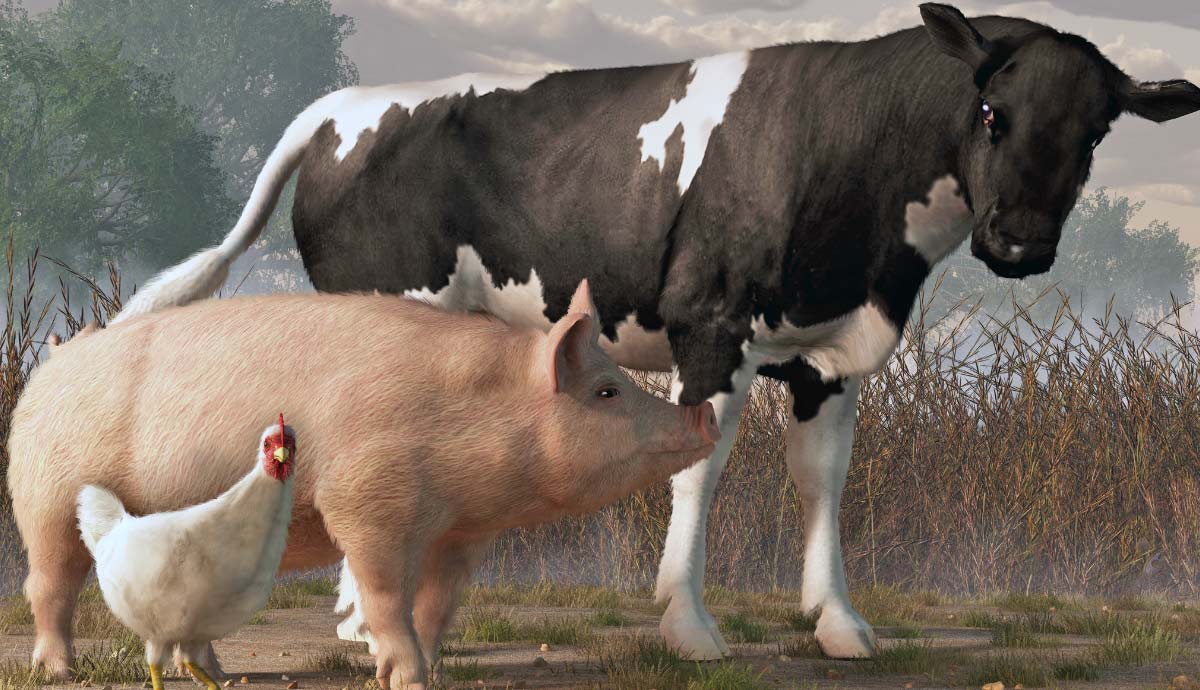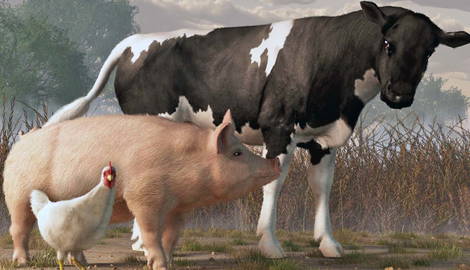
Incrementalism is common in animal ethics. A major egg producer is pressured to increase the size of battery cages or a pork producer is compelled to house sows in larger crates, the changes are belatedly made and a commitment to animal welfare is cited. But incrementalism doesn’t satisfy everyone. A more radical approach—in the proper sense of the word, to strike at the root—says that regardless of a cage’s size such practices are wrong because they use animals as mere means to our own ends. Rather than incrementalism, prohibition is the only moral option.
Incrementalism in animal ethics is characteristic of so-called animal welfarism, while prohibitionism is characteristic of animal rights. Animal welfarism is typically a less demanding view of animals’ moral status and of our obligations to them, but it’s also more flexible.
Animal Welfare and Animal Rights Distinguish Different Moral Standings

Imagine two scenarios. In scenario A, a puppy is discovered to be the only test subject for researching a rare but fatal disease. The research is painful and the dog will not benefit. But a number of humans will. In scenario B, a young child is discovered to be the only test subject for researching a rare but fatal disease. The research is painful and the child will not benefit. But a number of humans will.
These scenarios will yield diametrical responses. Most would say the research in scenario A is just or permissible (if unfortunate), while the research in scenario B is unjust or impermissible. This despite that in both scenarios conducting the research would have positive utility, that is, would produce more good than harm. One explanation of this discrepancy looks to the different test subjects. It says that in scenario A the puppy is a moral subject whose welfare can be overridden by utility considerations, while in scenario B the child is a moral subject whose rights cannot be.
Moral Statuses

This commits us to two kinds of moral status. A subject can have interests whose satisfaction is a matter of welfare (in the sense of well-being, not charity), or it can have rights whose satisfaction is a matter justice. These statuses should differ in at least two ways. First, they must be grounded in different facts about the subjects in question. So there must be something about a child that explains its status as a rights-bearer that does not apply to the puppy. Second, these moral statuses must have different ethical consequences. So having interests should explain why one’s welfare can be overridden by utility considerations, while having rights should explain why such considerations are not overriding.
Welfare is Grounded in Sentience, Rights are Grounded in Sapience

Matters are not quite as straightforward as this subtitle suggests. But it points in what some think is the right direction. Sentience is roughly the capacity to feel pleasure and pain, sapience roughly the capacity for discursive thought, which includes using language, deploying concepts and perhaps a degree of self-consciousness, that is, consciousness of oneself as a subject. If welfare is grounded in sentience and rights in sapience, then the difference between these capacities should explain the difference in these moral statuses. There should be something about being merely sentient, for example, that explains why utility considerations can override one’s interests.
But pinning down this difference is tricky. Scott Wilson, in his excellent article on animal ethics, notes that rights are sometimes thought to be grounded in a capacity to represent oneself as pursuing one’s own interests. The idea seems to be higher-order awareness of oneself as an agent confers on each person a uniqueness or irreplaceability that grounds that person’s right not to have his or her interests overridden by utility considerations, like the considerations in Scenario B that threaten to override the child’s interests.
Sentience

Mere sentience, by contrast, is suggested to be a less developed form of consciousness because, though sentient creatures have interests in pursuing pleasure and avoiding pain, they do not represent these interests to themselves as elements of a unique person or identity, nor arguably do these interests imply anything about meaning, purpose and fulfillment that we find preoccupying sapient subjects. So, on this view, sentient animals are not individuals per se, and this means that utility considerations can override their interests because these interests are fungible: so long as the action in question has utility, the interests this action satisfies are substitutes for, and therefore effectively nullify, the animal test subject’s unsatisfied interests in not being harmed.
The Animal Welfare/Rights Distinction is Questionable

So far we get the following picture. Most believe the child in Scenario B should not be a test subject because he has rights in virtue of possessing—or being expected to possess in the future—certain cognitive capacities, like reason, language and self-consciousness. Most also believe the puppy in Scenario A should be a test subject because, though he has interests in virtue of being sentient, these interests do not amount to rights and therefore can be overridden by utility considerations.
This is a pretty standard view: animals deserve welfare, and humans deserve rights; animals are replaceable; humans are not. But it’s suspiciously clean cut. It can be challenged on at least two counts: a normative question asking whether the capacities in question in fact entail the moral statuses, and a descriptive question asking whether these capacities in fact neatly bifurcate along humans and animals. I’ll conclude by saying something brief about each.
Two Pressure Points: Descriptive and Normative

Consider the descriptive question first. It has become a truism that the more we learn about animal cognition the more we learn how much we have in common with animals. The key question for animal welfarists is whether the bifurcated cognitive schema their theory relies on—simply put: humans are rational, animals are not—is simplistic. This is pressing because many cognitive capacities are graded (they come in degrees), so it’s not clear hard-and-fast lines can be drawn between animals and humans anyways. As well, for reasons of developmental abnormalities or accident, not all humans possess the same cognitive capacities. This forces those who espouse the welfare/rights framing in animal ethics to take up the highly provocative question of whether some humans deserve only welfare, not rights.
Normative

Now consider the normative question. We want to know more about connections between capacities and moral status. There must be some connection, because the alternative leaves open sticks and stones being moral subjects. But these connections are not obvious. Granted, there is something to be said about a connection between self-consciousness and rights: having a sense of oneself as an individual seems to confer on one a dignity that should not be compromised by crude utility calculations.
But it’s not clear most would believe this when pressed. For example, sharpen Scenario B: now the research on the child in question would save not just a number of humans, but all of humanity. How many people would conclude that, though it is highly unfortunate, this child must be a research subject? That’s an empirical question. But if a non-trivial number of people would arrive at this difficult conclusion, it’s worth interrogating these supposed normative connections between capacities and moral status.










